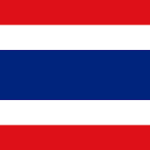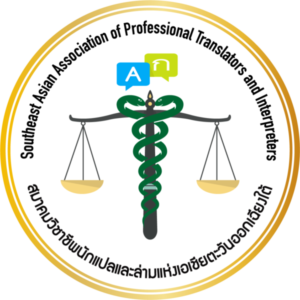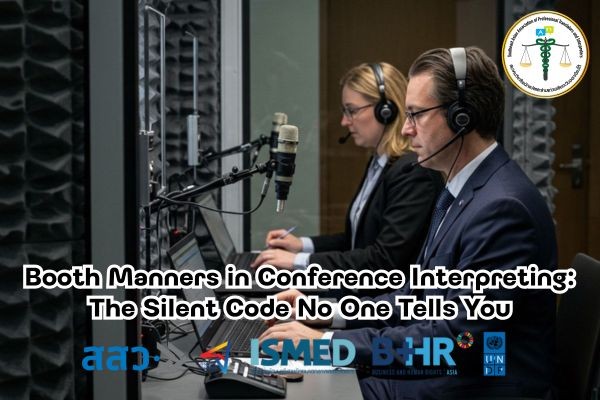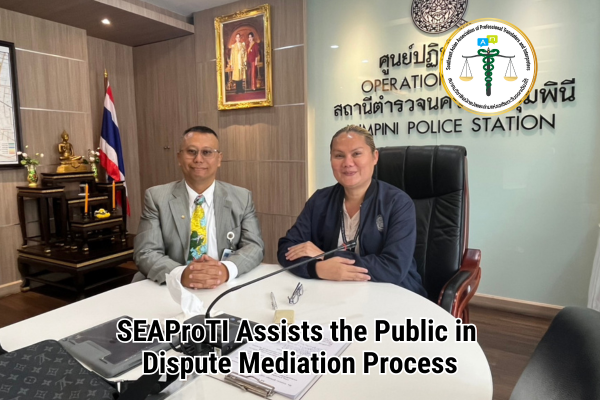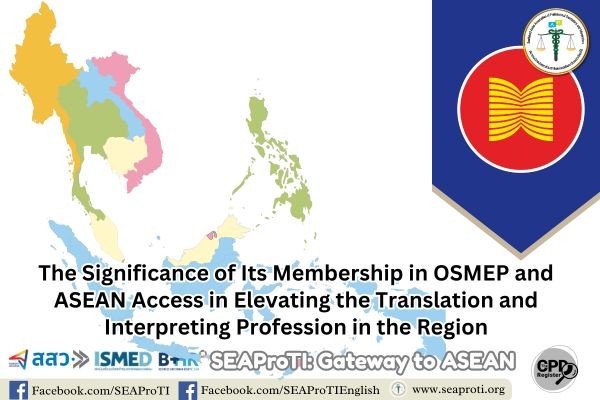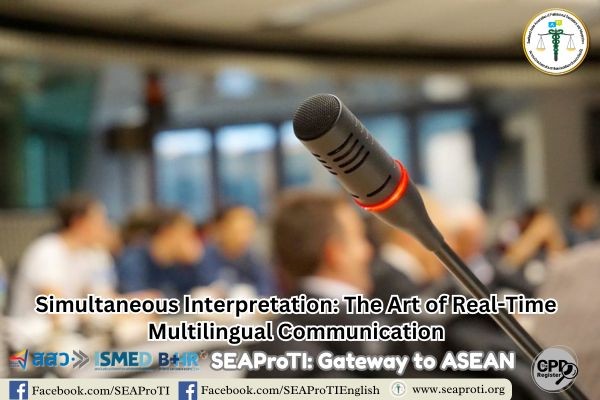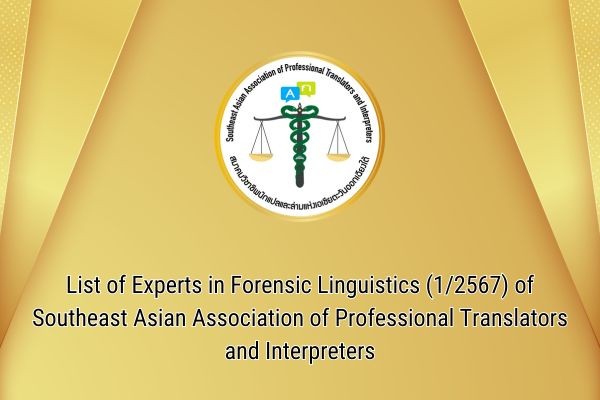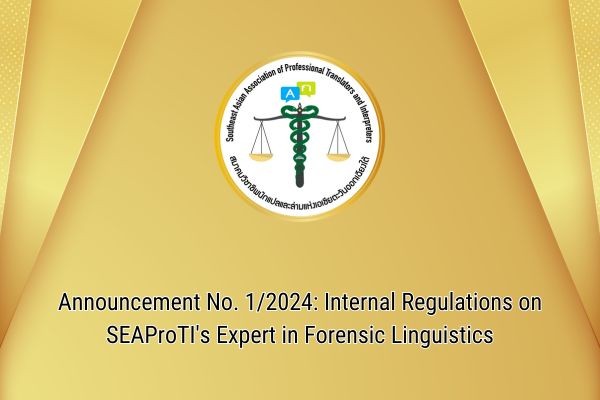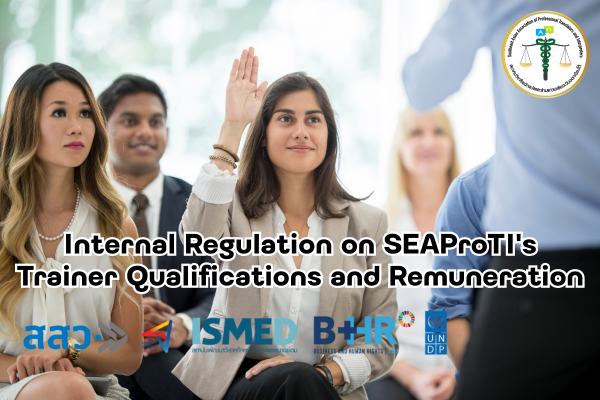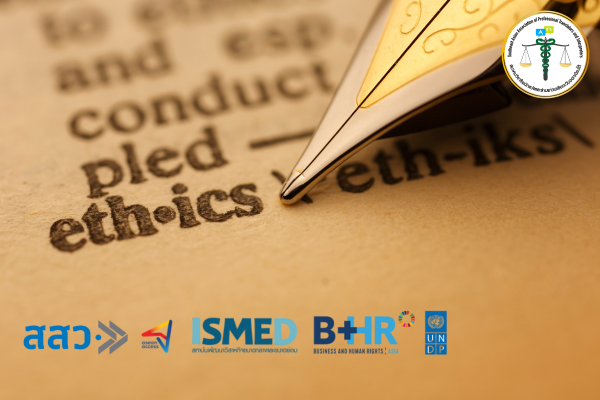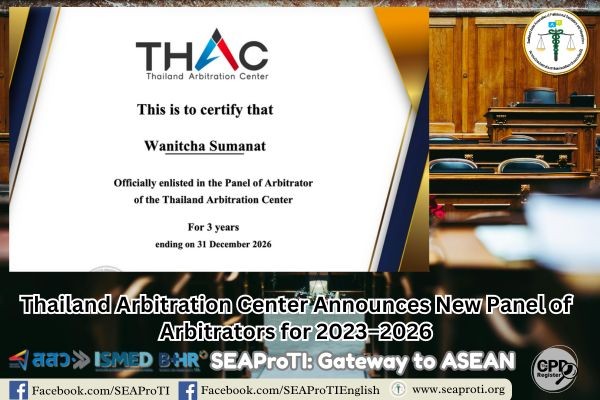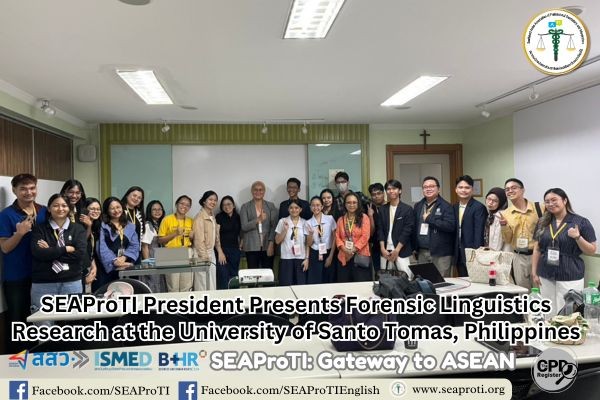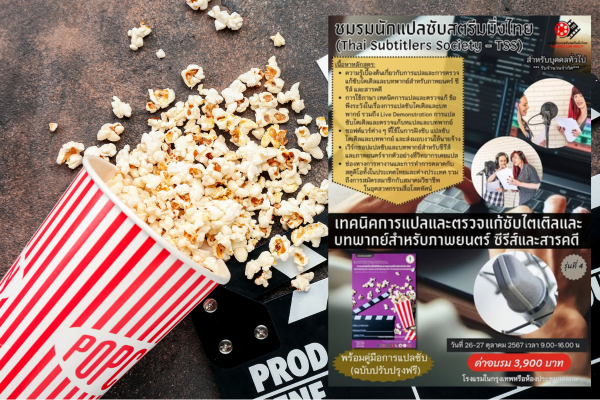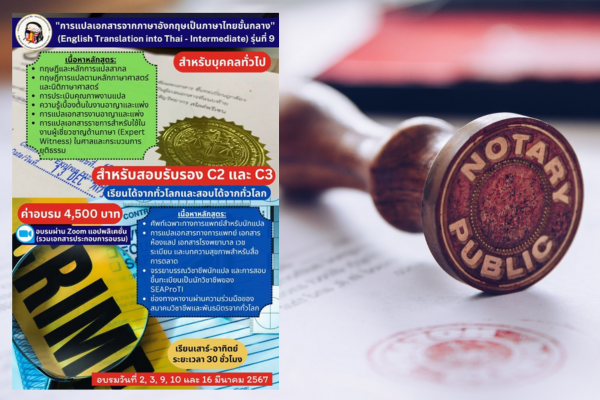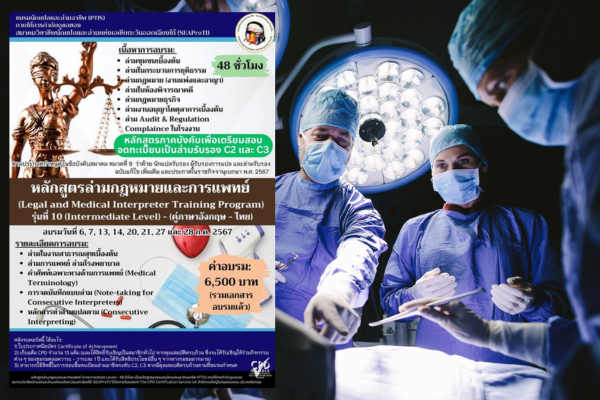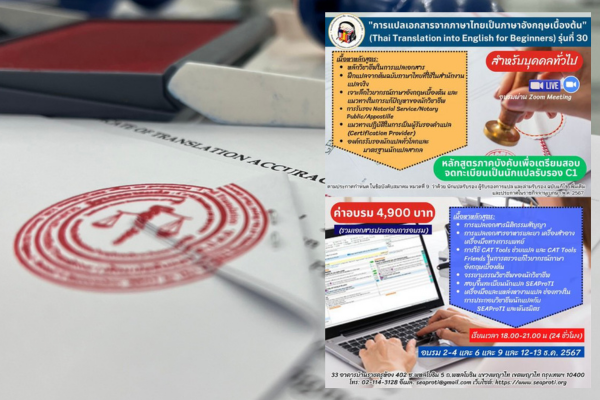Booth Manners in Conference Interpreting: The Silent Code No One Tells You
The Silent Code of Conference Interpreters: Unwritten Rules Every Interpreter Should Know
Simultaneous or conference interpreting is both an art and a science of professional language transfer. While the core of the task lies in accurate and faithful interpretation, an equally important factor is the interpreter’s etiquette within the booth. Whether in an on-site booth or working via Remote Simultaneous Interpreting (RSI), the unwritten rules of collaboration and teamwork play a vital role in the quality of interpretation and mutual trust between colleagues. This article outlines the practical, often unspoken standards that help interpreters work smoothly and professionally in both physical and remote settings.
Booth interpreting requires a strong sense of teamwork, as interpreters cannot work solo throughout the entirety of a conference. Preparation is critical. Interpreters should arrive at least 30 minutes before the assignment to test equipment, adjust to the room acoustics, and familiarize themselves with the speaker’s style and pace. For remote interpreting, interpreters must also check sound and video systems, test any handover signals or chat channels, and agree with their partner on how to take turns seamlessly.
Turn-taking is a highly sensitive process. Typically, interpreters switch every 20 to 30 minutes, using pre-agreed signals such as a light touch on the shoulder, passing a discreet note, or simple hand gestures. In remote interpreting, handover cues can be sent through chat or apps, with codes like “1” to indicate readiness to hand over, “2” to indicate readiness to take over, and “3” to signal taking over after the current sentence.
Support between booth partners must be silent yet effective. On-site, this may involve passing terminology or names on paper or on discreet screens. Interpreters must avoid whispering, tapping, or any noises that could distract the active interpreter. If a partner is struggling with a cough or needs water, offer assistance quietly rather than providing advice mid-delivery.
Interpreters must maintain composure at all times, even when speakers talk too quickly, mumble, or when technical issues arise. Emotional reactions such as sighing, eye-rolling, or muttering should be strictly avoided as they may inadvertently be transmitted through the glass or over the microphone.
Respecting a colleague’s individual interpreting style is fundamental to professional etiquette. Some interpreters prefer minimal reformulation, while others expand for clarity. As long as the interpretation remains accurate and ethically sound, colleagues should not interfere during the assignment. Constructive feedback, if necessary, should be given after the session with respect and professionalism.
Personal appearance and demeanor are also essential elements of the message. On-site interpreters should dress professionally and appropriately, as they represent the profession even when not on camera. Remote interpreters, even with cameras off, should maintain good posture, project a confident and engaged tone, and smile while speaking, as this positively impacts their delivery.
A debrief session after the assignment is a valuable practice that strengthens team relationships and encourages continuous professional improvement. It offers an opportunity to reflect on what worked well and what could be improved in the future. Most importantly, interpreters should thank their partner, especially if they received critical support such as terminology prompts or help covering a particularly challenging stretch of speech.
Conclusion
Booth manners for conference interpreters are not officially codified rules but have become universally accepted standards of professional conduct. These practices enhance teamwork, trust, and quality in interpreting services. When strictly observed, they allow interpreters to deliver a seamless experience for clients and conference participants while maintaining the highest professional standards.
SEAProTI’s certified translators, translation certification providers, and certified interpreters:
The Southeast Asian Association of Professional Translators and Interpreters (SEAProTI) has officially announced the criteria and qualifications for individuals to register as “Certified Translators,” “Translation Certification Providers,” and “Certified Interpreters” under the association’s regulations. These guidelines are detailed in Sections 9 and 10 of the Royal Thai Government Gazette, issued by the Secretariat of the Cabinet under the Office of the Prime Minister of the Kingdom of Thailand, dated July 25, 2024, Volume 141, Part 66 Ng, Page 100.
To read the full publication, visit: the Royal Thai Government Gazette
มารยาทในห้องแปลในการทำล่าม Conference Interpreters: กฎของล่ามที่ไม่มีใครบอก
การล่ามแบบแปลพร้อม (simultaneous interpreting) ในการทำล่ามประชุม (conference interpreting) เป็นหนึ่งในศาสตร์และศิลป์ของการถ่ายทอดภาษาแบบมืออาชีพ แม้ว่าความสามารถในการแปลอย่างแม่นยำและรักษาความหมายเดิมจะเป็นหัวใจหลักของงาน แต่ปัจจัยที่สำคัญไม่ยิ่งหย่อนไปกว่ากัน คือ มารยาทในการทำงานร่วมกันภายในตู้ล่ามหรือบูธ ไม่ว่าจะเป็นการล่ามแบบ On-site หรือ Remote Simultaneous Interpreting (RSI) ก็ตาม บทความนี้นำเสนอแนวทางการปฏิบัติที่ถือเป็นกฎที่ไม่มีใครบอกแต่มีผลอย่างยิ่งต่อคุณภาพของงานล่ามและความไว้วางใจระหว่างเพื่อนร่วมวิชาชีพ
งานล่ามในตู้ล่าม (booth interpreting) เป็นกิจกรรมที่ต้องอาศัยการทำงานเป็นทีมอย่างแท้จริง เพราะล่ามไม่สามารถทำงานคนเดียวตลอดระยะเวลาของการประชุมได้ ด้วยเหตุนี้การเตรียมความพร้อมจึงเป็นสิ่งจำเป็น ล่ามควรมาถึงสถานที่ปฏิบัติงานอย่างน้อย 30 นาทีก่อนเริ่มงาน เพื่อทดสอบอุปกรณ์ ตรวจสอบระบบเสียง และเรียนรู้ลักษณะสำเนียงและจังหวะการพูดของผู้พูด ในกรณีของ Remote Interpreting ล่ามต้องตรวจสอบระบบเสียงและภาพ ทดสอบช่องทางการส่งสัญญาณหรือระบบแชทที่ใช้ในการเปลี่ยนผลัดรับช่วง และตกลงล่วงหน้ากับคู่ล่ามในเรื่องการสลับกันแปลอย่างชัดเจน
การผลัดเปลี่ยนรับช่วงหน้าที่ระหว่างล่ามเป็นอีกหนึ่งจุดที่ต้องใช้ความละเอียดอ่อน โดยทั่วไปล่ามจะผลัดเปลี่ยนรับช่วงกันทุก 20-30 นาที โดยตกลงกันก่อนว่าควรใช้สัญญาณใด เช่น การแตะไหล่ การส่งโน้ต หรือการใช้สัญญาณมืออย่างสุภาพ ในการล่ามแบบ Remote การส่งสัญญาณผลัดเปลี่ยนรับช่วงจะทำผ่านระบบแชทหรือแอปพลิเคชัน เช่น การส่งตัวเลข 1 หมายถึง “พร้อมผลัด” หรือ 2 หมายถึง “พร้อมรับช่วง” การช่วยเหลือคู่ล่ามต้องทำให้เงียบที่สุด เช่น การส่งศัพท์หรือชื่อเฉพาะด้วยกระดาษหรือหน้าจอขนาดเล็ก และต้องหลีกเลี่ยงพฤติกรรมที่อาจทำให้คู่ล่ามเสียสมาธิ เช่น การกระซิบหรือเคาะโต๊ะเสียงดัง หากคู่ล่ามประสบปัญหาในการแปล เช่น การไอหรือสำลักน้ำ ควรช่วยเหลือโดยการส่งน้ำให้ แทนที่จะเสนอคำแนะนำขณะล่ามกำลังทำงาน
ในสถานการณ์ที่ผู้พูดพูดเร็ว พูดไม่ชัด หรือระบบมีปัญหา ล่ามต้องควบคุมอารมณ์และท่าทีอย่างเคร่งครัด ไม่ถอนหายใจ ไม่กลอกตา หรือพูดพึมพำ เพราะพฤติกรรมเหล่านี้อาจส่งผลผ่านกระจกหรือไมโครโฟนไปยังผู้ฟังได้โดยไม่ตั้งใจ
การเคารพสไตล์การแปลของคู่ล่ามถือเป็นอีกหนึ่งหลักจรรยาบรรณที่สำคัญ ล่ามแต่ละคนอาจมีเทคนิคและสไตล์แตกต่างกัน ทั้งการเน้นความกระชับของเนื้อหาหรือการขยายความเพิ่มเติม หากการแปลยังคงรักษาความถูกต้องและจริยธรรมของวิชาชีพ ล่ามคู่ไม่ควรก้าวก่ายหรือแทรกแซงขณะทำงานของล่ามอื่น หากจำเป็นต้องแสดงความเห็นหรือเสนอแนะแนวทางการปรับปรุง ควรเลือกพูดคุยหลังจบงานด้วยความสุภาพและมีเจตนาสร้างสรรค์
บุคลิกภาพและภาพลักษณ์ของล่ามก็เป็นองค์ประกอบสำคัญที่ไม่ควรมองข้าม สำหรับการล่ามแบบ On-site ล่ามควรแต่งกายให้สุภาพเรียบร้อยในลักษณะของการเป็นตัวแทนวิชาชีพ แม้จะไม่ได้อยู่หน้ากล้องตลอดเวลาก็ตาม ส่วนการล่ามแบบ Remote แม้กล้องจะปิดอยู่ก็ตาม แต่บุคลิกภาพ น้ำเสียง และท่าทางขณะล่ามก็ยังมีผลต่อคุณภาพเสียง เช่น การนั่งตัวตรง การใช้น้ำเสียงที่มั่นใจ และการยิ้มขณะพูดสามารถส่งพลังบวกให้แก่ผู้ฟังได้
เมื่อสิ้นสุดภารกิจการล่าม การพูดคุยประเมินผลการทำงานร่วมกัน (debrief) ถือเป็นธรรมเนียมปฏิบัติที่ช่วยส่งเสริมความสัมพันธ์และการพัฒนาทักษะในระยะยาว ล่ามควรใช้โอกาสนี้ในการแลกเปลี่ยนความคิดเห็นเกี่ยวกับจุดแข็งของการทำงานร่วมกัน รวมถึงข้อเสนอแนะเพื่อการพัฒนาในอนาคต ทั้งนี้ควรกล่าวขอบคุณคู่ล่ามเสมอ โดยเฉพาะในกรณีที่อีกฝ่ายให้ความช่วยเหลือในสถานการณ์เฉพาะ เช่น การส่งศัพท์ช่วยกลางประโยค หรือการรับช่วงต่ออย่างราบรื่น
สรุปส่งท้าย
มารยาทในตู้ล่ามสำหรับล่ามประชุมถือเป็นกฎที่ไม่ได้ถูกบัญญัติไว้อย่างเป็นทางการ แต่เป็นกฎที่ได้รับการยอมรับอย่างกว้างขวางในหมู่ล่ามมืออาชีพทั่วโลก หลักปฏิบัติเหล่านี้เป็นสิ่งที่ช่วยส่งเสริมความเป็นมืออาชีพ การทำงานร่วมกันอย่างมีประสิทธิภาพ และสร้างความไว้วางใจระหว่างเพื่อนร่วมวิชาชีพ หากล่ามทุกคนสามารถยึดถือและปฏิบัติตามได้อย่างเคร่งครัด งานล่ามประชุมก็จะสามารถดำเนินไปได้อย่างราบรื่นและสร้างความประทับใจให้กับผู้ใช้บริการในระดับสูงสุด
เกี่ยวกับนักแปลรับรอง ผู้รับรองการแปล และล่ามรับรองของสมาคมวิชาชีพนักแปลและล่ามแห่งเอเชียตะวันออกเฉียงใต้
สมาคมวิชาชีพนักแปลและล่ามแห่งเอเชียตะวันออกเฉียงใต้ (SEAProTI) ได้ประกาศหลักเกณฑ์และคุณสมบัติผู้ที่ขึ้นทะเบียนเป็น “นักแปลรับรอง (Certified Translators) และผู้รับรองการแปล (Translation Certification Providers) และล่ามรับรอง (Certified Interpreters)” ของสมาคม หมวดที่ 9 และหมวดที่ 10 ในราชกิจจานุเบกษา ของสำนักเลขาธิการคณะรัฐมนตรี ในสำนักนายกรัฐมนตรี แห่งราชอาณาจักรไทย ลงวันที่ 25 ก.ค. 2567 เล่มที่ 141 ตอนที่ 66 ง หน้า 100 อ่านฉบับเต็มได้ที่: นักแปลรับรอง ผู้รับรองการแปล และล่ามรับรอง
